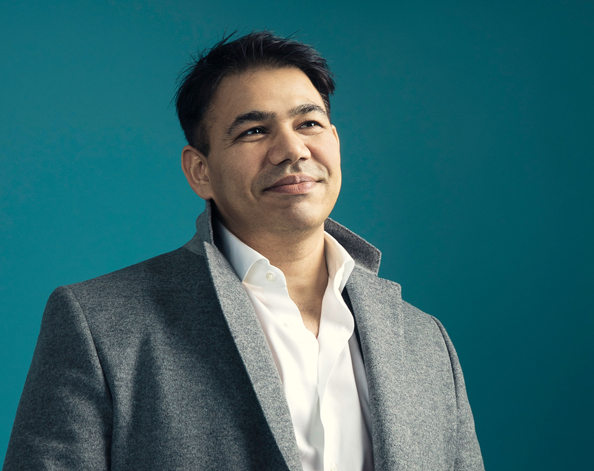The Future of Residential Property in the UK
Prioritising green spaces
Most notably, we could see far greater value placed on outside space, as buyers - particularly city dwellers - seek the chance to get outdoors and, crucially, reconnect with nature. For this reason, there will be a premium on gardens and green space, as balconies - though once coveted - may well struggle to meet the green-fingered aspirations of would-be gardeners.
Earlier this month a report from planning consultancy Ecological Planning & Research called for developers to “prioritise access to green space for the long-term benefit of human mental and physical wellbeing,” as a result of the crisis.

Some people crave the interaction that comes with being in a busy city and collaborating with colleagues, and that could be a bigger priority when considering mental wellbeing.
Indeed, the restrictions on travel and movement imposed by social distancing have highlighted not only our increasing desire to be outside (and in doing so to escape the confines of our own four walls) but also a growing understanding of nature’s therapeutic effects and ability to quell anxiety.
We believe this will have repercussions for planners, particularly in high-density urban areas where green spaces are harder to come by. Local city authorities will come under pressure to place more emphasis on the provision of accessible, high-quality and sustainable open spaces - and for this to become a key requirement for new residential developments, too.
One way local authorities can integrate outdoor space into new homes is airspace development, where homes are built atop existing buildings. Arshad Bhatti, founder and CEO of leading airspace developer Apex Airspace, explains: “Extending buildings upwards can generate new homes out of thin air, requiring no additional space in land-scarce cities. Built via off-site modular construction and craned into place once complete, airspace developments can leave space for natural balconies to sit atop the buildings. The extensions can also contribute to regeneration efforts for the entire building, with rooftop green spaces for the community, and exercise facilities such as gyms and running tracks. The developments can also contribute landscaping and reviving the existing surroundings”
Green space should not be in competition with housing - instead, residential new builds should be seen as an opportunity to facilitate the provision of green space, especially in built-up areas.

Extending buildings upwards can generate new homes out of thin air, requiring no additional space in land-scarce cities. The extensions can also contribute to regeneration efforts for the entire building, with rooftop green spaces for the community, and exercise facilities such as gyms and running tracks. The developments can also contribute landscaping and reviving the existing surroundings.
Moving beyond the city limits
This desire for outdoor space will likely impact not only how we live but also where we live.
Covid-19 has proven our ability to work from home, and already we are seeing indications that the traditional office may become a luxury rather than the norm. Earlier this month Twitter became one of the first companies to announce that it will allow its employees to work from home forever, should they want to. With much of the workforce thus ‘untethered’ from its workplace, it will no longer be necessary for businesses, nor their employees, to cluster in claustrophobic city centres if they don’t want to.
Gifting people with the freedom to work and live from wherever they choose may accelerate certain trends, including the demand for properties in suburban and rural areas, as many people seek to escape the hassle of city living. For many, living closer to the countryside will become a long-term lifestyle choice - not just a weekend getaway.
While this migration has the potential to create new zones of innovation and opportunity, it brings with it requirements for key infrastructural developments. The focus of these developments will be on improved connectivity, with high-speed rural broadband and mobile connectivity, in particular, becoming a prerequisite for our new remote working lifestyles. Although much has been done in recent years to improve rural connective infrastructure, Ofcom’s Home Broadband Performance Report recently revealed that while broadband speeds in rural areas are catching up to those in towns and cities, they still lag behind.
Similarly, although there is some doubt as to the progress of the HS2 project in the face of a worsening economic outlook, there will be a focus on fast transport links to physically open up connections between rural areas and cities.
This is not to say, of course, that we believe there’ll be a mass departure from our cities. For every buyer who is craving rural countryside living, there will be a buyer for whom the daily interactions that come with city life have become even more important as a result of lockdown.
There is no one-size-fits-all answer to what our requirements will look like. As Jo Eccles, Managing Director of SP Property Group, explains: “Work life balance is completely changing and the ability to work from home effectively is under the spotlight. But beyond whether or not we can work from home, there is also the question of whether we want to. With a rise in home working there may well be a rise in people considering rural locations as they look for access to green space, but mental wellbeing is also impacted by other things.”
“As a business we’ve canvassed our employees on how they want to work and the outcomes really depend on demographics – for example, if you're younger and live on your own, will there be appetite to be isolated outside the city and not come into the office? Some people crave the interaction that comes with being in a busy city and collaborating with colleagues, and that could be a bigger priority when considering mental wellbeing.”
Biodiversity and sustainable design
Finally, in response to our greater understanding of the benefits of living more closely alongside nature, there will come a greater sense of responsibility in actively protecting - and bettering - it.
From an architectural perspective, this is closely linked to sustainable design, with approaches that can include renewable energy, water management, waste recycling and sustainable building materials.
One example is Danish architectural practice, Henning Larsen, which is designing an all-timber neighbourhood in Copenhagen that integrates itself into the natural landscape, collaborating with biologists and environmental engineers to ensure its efficacy.
Projects such as these, of course, are still fairly unique - but over time I expect to see greater demand, particularly from high-net-worth individuals, for buildings which champion sustainable living principles.
We could also see increasingly innovative green spaces spring up to meet these eco-friendly desires within new developments, which have been built with nature in mind. Green roofs, for instance, are an option for developers working in built-up areas, offering both recreational benefits for residents as well as combating air pollution and improving a building’s thermal performance.

The country market has been struggling for some years, but due to a release of pent up demand and also a shift in the way we're approaching our work life balance, in May so far, Savills has seen a 25% increase in demand for viewings in the prime country market compared to May 2019. Although it's too early to talk about parity to the levels of pre financial crisis, there are certainly signposts that we could indeed see a rural renaissance.
Value for money
Beyond the extensive benefits we’ve set out, rural dwellings present relative value for money in comparison to those in urban areas. In recent years, suburban locations have lagged prime residential but in times of affordability and changing work styles, we could see these markets become more active than we’ve seen in the past.
Guy Meacock, Director at Prime Purchase, agrees: “We may well experience a shift from town to country as people who have been locked down in an urban environment seek the freedom of green spaces. The country market has been struggling for some years, but due to a release of pent up demand and also a shift in the way we're approaching our work life balance, in May so far, Savills has seen a 25% increase in demand for viewings in the prime country market compared to May 2019. Although it's too early to talk about parity to the levels of pre financial crisis, there are certainly signposts that we could indeed see a rural renaissance.”
A long-term priority
While lockdown measures are slowly beginning to ease, many of us still find ourselves staying mostly at home, and handling the anxieties and pressures that come with continued social distancing.
There is great opportunity for Covid-19 to accelerate a trend for better provision of outside spaces, improved connectivity in rural areas, and more sustainable building design - all of which should be seized with both hands.

